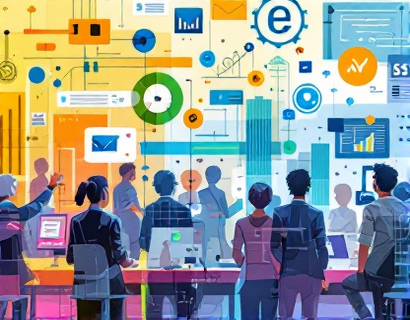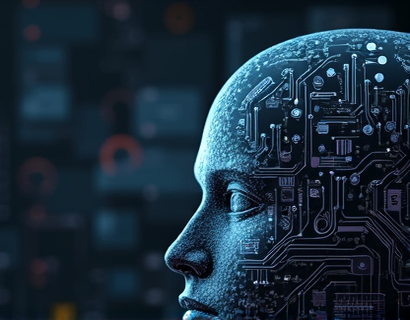Transforming Access to Social Services Information: The Power of AI-Driven Chat Interfaces
The landscape of accessing information on social services is undergoing a significant transformation, thanks to the integration of AI-powered chat interfaces. These advanced tools are designed to provide users with verified, specialized content that ensures a safe and educational experience. This shift is particularly beneficial for a diverse audience, including adults, students, and young learners, who can now navigate complex social service systems with ease and confidence.
Understanding the Need for Specialized Information
Social services encompass a broad range of support systems designed to assist individuals and families in various aspects of life, from healthcare and education to housing and employment. The complexity and specificity of these services necessitate accessible and reliable information sources. Traditional methods of finding this information, such as browsing through extensive websites or contacting organizations directly, can be overwhelming and time-consuming. An AI-driven chat interface addresses these challenges by offering a streamlined, intuitive way to access the necessary resources.
Key Features of AI-Powered Chat Interfaces
These chat interfaces are equipped with advanced natural language processing capabilities, allowing them to understand and respond to user queries in a conversational manner. This technology ensures that users receive accurate, context-specific information tailored to their needs. Key features include:
- Verified Content: All information provided is cross-checked for accuracy and relevance, ensuring users receive reliable data.
- Personalization: The chat interface adapts responses based on user profiles, including age and specific requirements, making the experience more relevant and helpful.
- Multilingual Support: Accessibility is enhanced by offering content in multiple languages, breaking down language barriers and making information more widely available.
- Child-Friendly Versions: Specialized versions of the chat interface are designed for young users, ensuring the content is age-appropriate and safe.
Empowering Informed Decision-Making
The primary goal of these AI-powered chat interfaces is to empower users to make informed decisions regarding social services. By providing detailed, easy-to-understand information, individuals can better assess their needs and choose the most suitable options. This empowerment is crucial for fostering independence and self-sufficiency, especially for those who might otherwise feel overwhelmed by the complexity of social service systems.
For adults seeking assistance with healthcare benefits, for example, the chat interface can guide them through eligibility criteria, application processes, and available support options. Similarly, students and young learners can find information on educational grants, counseling services, and other resources tailored to their stage of life. The chat interface serves as a trusted guide, simplifying what could otherwise be a daunting task.
Ensuring a Safe and Educational Experience
Safety and education are paramount in the design and implementation of AI-powered chat interfaces for social services. These platforms are built with robust security measures to protect user data and privacy. Additionally, the content is rigorously vetted to ensure it meets high standards of accuracy and appropriateness. For young users, the chat interface includes additional safeguards, such as strict content filters and monitoring, to create a secure environment.
Educational value is another critical aspect. The chat interface not only provides information but also offers explanations and additional resources to enhance understanding. For instance, when a user inquires about a specific social service, the chat can provide a brief overview of the service, its purpose, and how it operates, along with links to more detailed articles or official resources. This approach helps build a deeper knowledge base and encourages users to engage more deeply with the subject matter.
Benefits for Diverse User Groups
The benefits of AI-powered chat interfaces extend across various user groups, each with unique needs and challenges:
Adults
For adults, these chat interfaces offer a convenient and efficient way to navigate social service systems. Whether seeking information on unemployment benefits, housing assistance, or health insurance, the chat provides clear, step-by-step guidance. This is particularly valuable for individuals who may have limited time or access to traditional information sources.
Students and Young Learners
Students and young learners benefit from a chat interface that is both educational and age-appropriate. The content is designed to be engaging and easy to understand, helping young users develop essential skills in research and decision-making. For example, a student looking for college financial aid information can receive detailed explanations of different types of aid, application deadlines, and tips for preparing applications.
Caregivers and Support Professionals
Caregivers and support professionals also find these chat interfaces invaluable. They can quickly access information on resources available for the individuals they support, such as respite care services, adult day programs, and legal assistance. The chat can provide tailored recommendations based on the specific needs of the individuals, streamlining the process of finding appropriate support.
Enhancing Accessibility and Inclusivity
Accessibility is a core principle in the development of AI-powered chat interfaces. These platforms are designed to be inclusive, catering to users with various abilities and backgrounds. Features such as text-to-speech, adjustable font sizes, and support for screen readers ensure that the information is accessible to everyone, including those with visual or hearing impairments. Multilingual support further extends accessibility, making the resources available to a broader audience.
Moreover, the chat interfaces are designed to be culturally sensitive and aware of diverse social contexts. This consideration ensures that the information provided is relevant and respectful to users from different backgrounds, fostering a more inclusive and supportive environment.
Case Studies and Success Stories
Several organizations have already implemented AI-powered chat interfaces with notable success. One example is a national healthcare organization that launched a chatbot to assist patients in navigating their benefits and finding local healthcare providers. The chatbot has significantly reduced the time patients spend on the phone with customer service representatives, leading to higher satisfaction rates and more efficient service delivery.
Another success story comes from an educational institution that integrated a chat interface to help students find financial aid and academic resources. The chat has become a go-to tool for students, providing quick answers to common questions and guiding them through the application process. Feedback from students indicates a higher sense of confidence and control over their educational journey.
Challenges and Future Directions
While AI-powered chat interfaces offer numerous benefits, there are challenges to consider. One key challenge is ensuring the accuracy and relevance of the information provided. Continuous updates and monitoring are essential to maintain the quality of the content. Additionally, there is a need for ongoing user feedback to refine the chat's capabilities and address any issues that arise.
Looking ahead, the integration of AI with other technologies, such as machine learning and data analytics, can further enhance the functionality of these chat interfaces. Predictive analytics can help anticipate user needs and proactively offer relevant information. Integration with other digital platforms, such as social media and mobile apps, can also expand the reach and impact of these tools.
Conclusion
The introduction of AI-powered chat interfaces represents a significant advancement in how individuals access and interact with social services information. By providing verified, specialized content in a user-friendly format, these platforms empower users to make informed decisions and navigate complex systems with confidence. As technology continues to evolve, the potential for these chat interfaces to transform social service access is immense, promising a future where information is not only accessible but also empowering for all users.











































